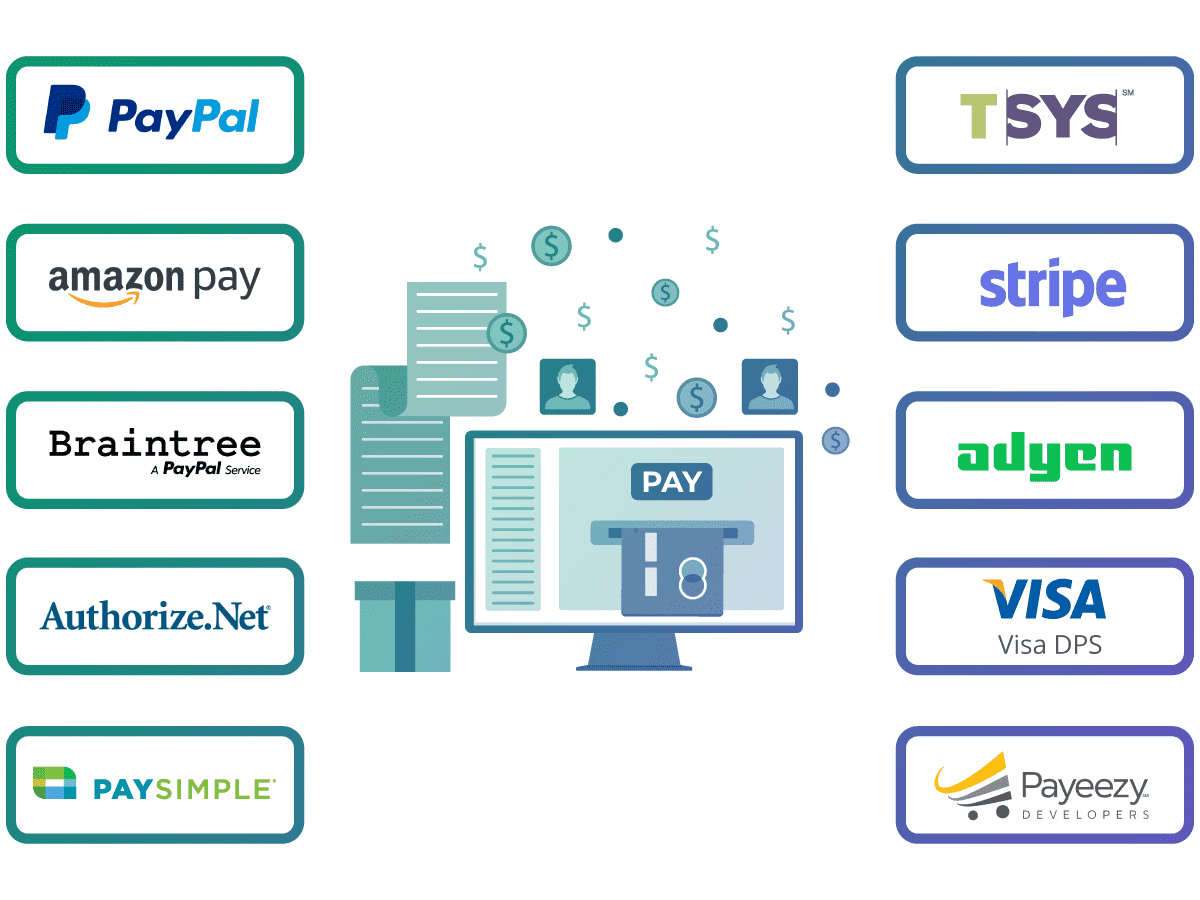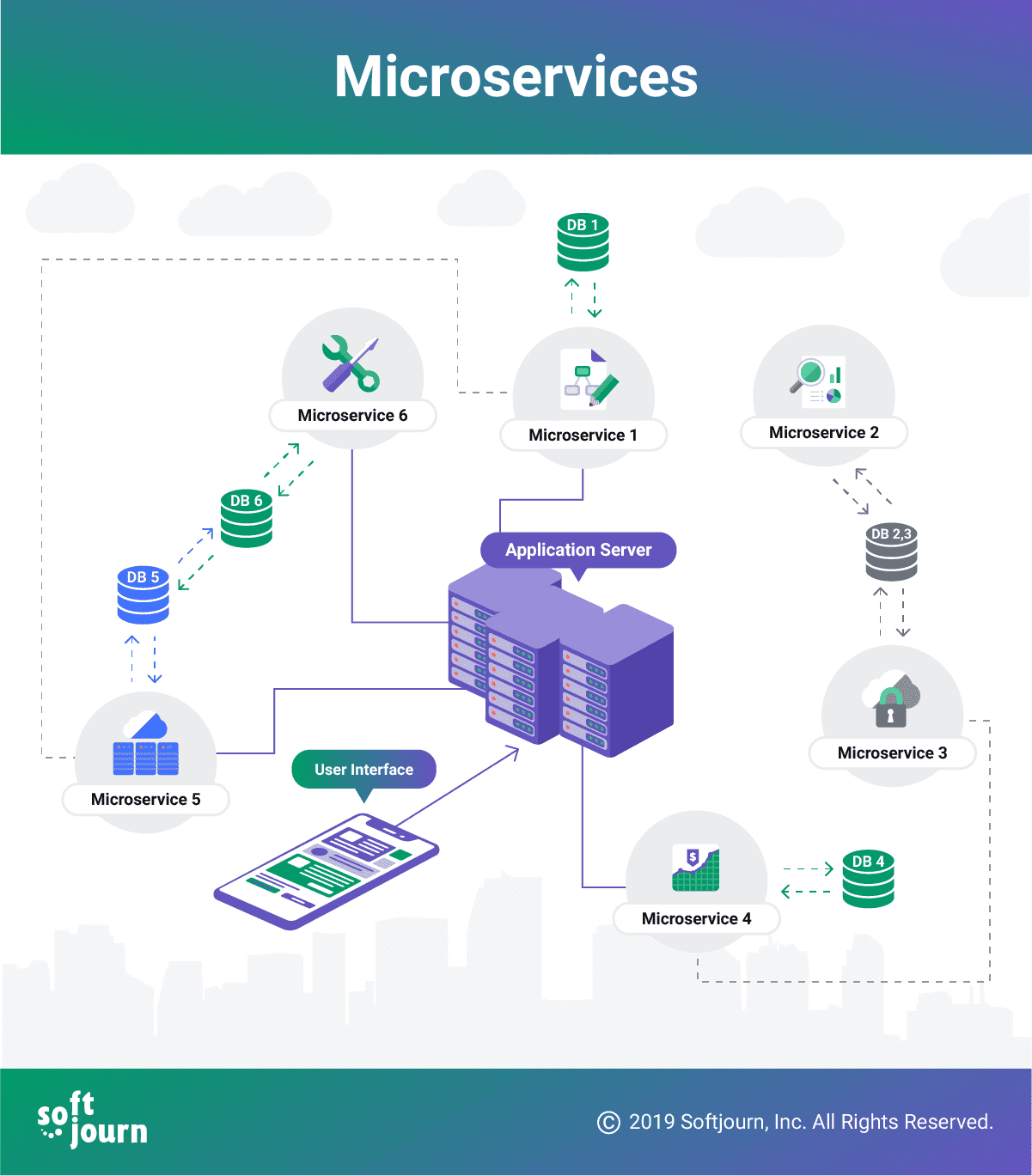Application Programming Interfaces (APIs) have become a cornerstone of modern software development, enabling seamless communication between different applications and services.
APIs might seem like a developer’s concern — but they power just about every digital experience we rely on today. Whether you’re streaming your favorite show, making an online payment, or syncing data between platforms — there’s likely an API making it all possible.
At Softjourn, we’ve spent years building and integrating APIs in fintech, event ticketing, media, and more. With that hands-on experience, we decided to answer a common question: What is an API, and why is it so important?
Let’s break it down — with real-world use cases and key benefits.
What is an API?
An API — short for Application Programming Interface — is a set of rules and protocols that allows different software applications to communicate with each other.
Think of it like a waiter in a restaurant: you (the user) tell the waiter (the API) what you want from the kitchen (the server), and the waiter brings it back to you. You don’t need to know how the kitchen works — you just get the result.
APIs are used in almost every digital service. They let apps pull data, connect to services, or trigger actions — like displaying weather info, processing payments, or booking a ticket.
2025: AI and API
As artificial intelligence (AI) continues to evolve, APIs have emerged as a critical component in integrating AI capabilities into various applications. They allow developers to access AI models and services without needing to understand the underlying complexities of machine learning algorithms. This accessibility democratizes AI, enabling businesses of all sizes to incorporate intelligent features into their products.
For instance, companies can use APIs to implement natural language processing, image recognition, or predictive analytics into their applications. This enhances user experience and allows businesses to leverage advanced technologies without extensive in-house expertise.
Moreover, the rise of cloud-based AI services has further accelerated the adoption of APIs. These services offer scalable solutions that can adapt to businesses' varying demands, allowing them to process large volumes of data efficiently. For example, a retail company can utilize an AI-powered recommendation engine through an API to analyze customer behavior and suggest products in real-time, ultimately driving sales and improving customer satisfaction. This flexibility is particularly beneficial for startups and small enterprises that may not have the resources to develop their own AI systems from scratch.
APIs enhance functionality and foster collaboration and innovation within the tech community. Developers can share their findings and improvements by providing a standardized way to access AI capabilities, leading to a more robust ecosystem. Open-source AI APIs, for instance, encourage experimentation and allow developers to build upon each other's work, creating a cycle of continuous improvement. This collaborative spirit is essential in the fast-paced world of technology, where staying ahead of the curve is crucial for success.

Importance of APIs in Technology
APIs are vital in today's interconnected world, acting as the glue that binds different software systems. They facilitate the integration of various applications, allowing them to work together harmoniously. This integration is crucial for organizations looking to streamline operations, enhance customer experiences, and innovate rapidly.
Facilitating Integration Across Systems
One of the primary functions of APIs is to enable integration across diverse systems. Businesses often rely on multiple software solutions to manage different aspects of their operations. APIs provide a standardized way for these systems to communicate, ensuring that data flows seamlessly from one application to another.
This integration reduces the need for manual data entry, minimizes errors, and enhances overall efficiency. For example, a customer relationship management (CRM) system can integrate with an email marketing platform through APIs, allowing for automated data sharing and improved campaign management. Additionally, APIs can connect cloud-based services with on-premises systems, enabling organizations to leverage the best of both worlds while maintaining data integrity and security.
Enhancing Data Accessibility
APIs play a crucial role in enhancing data accessibility. They allow developers to access and retrieve data from various sources, whether it's internal databases or external services. This accessibility is essential for creating data-driven applications that rely on real-time information.
Moreover, APIs enable businesses to expose their data to third-party developers, fostering innovation and collaboration. By providing access to valuable data through APIs, organizations can encourage the development of new applications and services that enhance their offerings.
This openness stimulates creativity and allows for rapid product iteration. Developers can build upon existing frameworks and data sets to create tailored solutions that meet specific market needs. Furthermore, the rise of open APIs has led to a thriving ecosystem of developers who contribute to a shared pool of resources, driving technological advancement across industries.
Common Use Cases for APIs
APIs are versatile tools that can be applied in numerous scenarios across various industries. Understanding their common use cases can help organizations identify opportunities to leverage APIs effectively.
Enabling Third-Party Applications
One of the most prevalent use cases for APIs is enabling third-party applications to interact with a primary platform. For instance, social media platforms often provide APIs that allow developers to create applications that can post updates, retrieve user data, or analyze engagement metrics.
This capability not only expands the functionality of the primary platform but also fosters a vibrant ecosystem of applications that enhance user engagement and satisfaction. Additionally, APIs can facilitate integrations with analytics tools, enabling businesses to gain deeper insights into user behavior and preferences, which can inform marketing strategies and product development.
Streamlining Business Processes
APIs can significantly streamline business processes by automating repetitive tasks and facilitating data exchange between systems. For example, an e-commerce platform can use APIs to connect with payment gateways, inventory management systems, and shipping providers, ensuring a smooth transaction process from start to finish.
By automating these interactions, businesses can reduce operational costs, minimize errors, and improve overall efficiency, allowing teams to focus on more strategic initiatives. Furthermore, APIs can enable real-time data synchronization across different departments, ensuring that sales, marketing, and customer service teams are all working with the most up-to-date information.
This interconnectedness not only enhances collaboration but also leads to a more cohesive customer experience, as clients receive consistent and timely information regardless of the channel they engage with.
Understanding How APIs Work
To fully appreciate the benefits of APIs, it is essential to understand how they work. APIs operate on a request and response model, where one application sends a request to another application, which then processes the request and sends back a response.
Request and Response Mechanics
The mechanics of API communication involve several key components. When an application makes a request, it typically includes an endpoint URL, a method (such as GET, POST, PUT, or DELETE), and any necessary parameters or headers. The receiving application processes this request and returns a response, usually in a structured format like JSON or XML.
This structured communication allows developers to build applications that can easily interact with one another, regardless of the underlying technologies used. For instance, a mobile app might request data from a web server, which in turn retrieves information from a database. This seamless interaction enables functionalities like real-time updates, data sharing, and integration of various services, enhancing user experiences across platforms.
Authentication and Security Protocols
Security is a critical aspect of API design. APIs often implement authentication and security protocols to protect sensitive data and ensure that only authorized users can access specific functionalities. Common methods include API keys, OAuth tokens, and JWT (JSON Web Tokens).
These protocols help safeguard data while allowing developers to create secure applications that can interact with external services without compromising user information. Additionally, the implementation of rate limiting and throttling can prevent abuse of the API, ensuring that services remain available and responsive even under heavy load.
By incorporating these security measures, developers can build robust applications that function effectively and prioritize their users' safety and privacy, fostering trust and reliability in their services.
API Security Best Practices
Implementing robust security measures is critical for protecting APIs from increasingly sophisticated threats. Based on industry best practices and real-world implementations, consider these essential security measures:
- Implement proper authentication and authorization: Beyond basic API keys, implement OAuth 2.0 with scope-based permissions to limit access to sensitive operations. According to the OWASP API Security Project, broken authentication remains the top API vulnerability.
- Adopt the principle of least privilege: Each API client should have access only to the resources and operations necessary for its function. For example, a reporting application might need read-only access, while an administrative tool requires full CRUD capabilities.
- Validate all input: Implement thorough request validation against a defined schema to prevent injection attacks, data corruption, and unexpected system behavior. This includes validating:
- Parameter data types and ranges
- Request payload structure and size
- Header values and formatting
- Implement rate limiting: Protect your infrastructure from abuse by limiting request volumes. Common implementations include:
- Token bucket algorithm: 1,000 requests per hour with a maximum burst of 100 requests
- Fixed window: 60 requests per minute per API key
- Sliding window: 600 requests per 10-minute period
- Encrypt data in transit: Always use TLS 1.2+ for all API communications, with proper certificate management and regular rotation.
Organizations implementing these security measures report significantly fewer API-related security incidents compared to those following only basic security practices.
Types of APIs Explained
APIs come in various forms, each designed to serve specific purposes. Understanding the different types of APIs can help organizations choose the right solution for their needs.
Public APIs
Public APIs, also known as open APIs, are accessible to any developer or application. They are designed to encourage third-party integrations and foster innovation. Examples include the X API or Google Maps API, which allow developers to build applications that leverage these platforms' functionalities.
Public APIs are often documented extensively, providing developers with the necessary information to integrate seamlessly. They typically include comprehensive guides, code samples, and community forums, enabling developers to troubleshoot issues and share insights. The open nature of public APIs not only drives innovation but also creates a vibrant ecosystem where developers can contribute new features and enhancements, ultimately benefiting the platform and its users.
These are available to any developer and are intended for widespread use.
Examples:
- X API – Allows developers to access tweets, user profiles, and trends.
- OpenWeatherMap API – Provides weather data globally.
- Google Maps API – Offers geolocation, routing, and map services.
- Spotify Web API – Lets developers access music data, playlists, and user profiles.
Private APIs
Private APIs are designed for internal use within an organization. They allow different teams or departments to share data and functionalities securely without exposing them to external developers. This can enhance collaboration and streamline internal processes.
Private APIs are often tailored to the specific needs of the organization, ensuring that they align with internal systems and workflows. They can facilitate the integration of legacy systems with modern applications, allowing organizations to leverage existing investments while adopting new technologies. Additionally, private APIs can enhance security protocols, as they can be designed with strict access controls and authentication measures, ensuring that sensitive data remains within the organization.
These are used internally within a company and not exposed to external developers.
Examples:
- Netflix internal APIs – These are used by different teams to communicate between microservices (e.g., catalog, billing, recommendations).
- Amazon internal APIs – Facilitate operations between internal services like inventory, shipping, and payments.
- Bank’s internal API – This is for secure communication between the mobile app and the core banking system.
Partner APIs
Partner APIs are shared with specific business partners or collaborators. These APIs allow organizations to extend their services to trusted partners while maintaining control over data access and functionalities. This type of API is commonly used in B2B scenarios, where companies collaborate to create integrated solutions.
Partner APIs can enhance business relationships and foster innovation by enabling seamless data exchange and collaboration. They often come with agreements that outline usage limits, data security measures, and support expectations. This structured approach helps build trust between partners and ensures that both parties can maximize the potential of their collaborative efforts. Furthermore, partner APIs can be a strategic tool for businesses looking to expand their reach, as they allow for the integration of services that can complement each other, ultimately providing greater value to end-users.
These are shared with selected partners, often under strict licensing or terms of use.
Examples:
- Shopify Partner API – Used by third-party app developers and service providers to integrate with Shopify stores.
- Uber API for partners – Enables companies to integrate ride-hailing features into their own apps.
- Expedia API – Provides travel partners access to hotel, flight, and car rental booking systems.
- eBay Partner API – Allows affiliate partners to search listings and get referral commissions.
Composite APIs
Composite APIs allow developers to access multiple endpoints in a single call. This can be particularly useful when an application simultaneously needs to retrieve data from different sources. For example, a composite API might combine data from a user profile API and a transaction history API, providing a comprehensive view of a user's interactions.
Composite APIs can improve performance and streamline data retrieval processes by reducing the number of requests needed. They are especially beneficial in microservices architectures, where applications are composed of numerous small, independent services. Composite APIs can help mitigate the overhead associated with multiple network calls, thus enhancing the user experience by delivering faster response times. Additionally, they can simplify the development process, allowing developers to work with a single API endpoint instead of managing multiple ones, which can lead to cleaner code and easier maintenance.
These combine multiple service calls or data sources into a single API request, often used in microservices or mobile environments.
Examples:
- Salesforce Composite API – Allows a single request to perform multiple CRUD operations across Salesforce objects.
- Netflix Composite API – Retrieves data like movies, ratings, and user info in a single call to reduce round trips for mobile apps.
- PayPal Batch API – Combines multiple payment transactions in one API call.
- Custom mobile backend – A single endpoint that fetches user profiles, messages, and notifications all at once.

Benefits of Using APIs
The adoption of APIs offers numerous benefits for organizations, ranging from enhanced efficiency to improved innovation. Understanding these advantages can help businesses recognize the value of integrating APIs into their operations.
One of the most significant benefits is increased agility. APIs allow organizations to quickly adapt to changing market demands by enabling rapid integration of new technologies and services. This flexibility is crucial in a fast-paced digital landscape. For instance, a retail company can seamlessly integrate a new payment gateway or a logistics service through APIs, ensuring that they stay competitive without overhauling their entire system architecture.
Moreover, APIs can enhance customer experiences by enabling personalized services and seamless interactions across platforms. Businesses can create cohesive user journeys that meet customer expectations and drive engagement by leveraging APIs. For example, a travel booking platform can utilize APIs to aggregate data from various airlines, hotels, and car rental services, allowing users to customize their travel plans effortlessly. This not only improves user satisfaction but also increases the likelihood of repeat business.
In addition to these benefits, APIs foster collaboration between different teams within an organization. By standardizing communication protocols, APIs enable developers, marketers, and product managers to work together more effectively. This collaborative environment can lead to innovative solutions and faster problem-solving, as teams can share data and insights in real-time. Furthermore, APIs can facilitate partnerships with third-party vendors, allowing businesses to expand their service offerings without the need for extensive internal development.
Another noteworthy advantage of using APIs is the potential for cost savings. By leveraging existing services and functionalities through APIs, organizations can reduce the time and resources spent on developing new features from scratch. This not only accelerates the development process but also allows companies to allocate their budgets more efficiently, focusing on core competencies while utilizing external expertise for supplementary services. As a result, businesses can achieve a higher return on investment and drive sustainable growth in an increasingly competitive marketplace.
Real-World API Integration Success Stories
The transformative power of APIs is best demonstrated through real-world implementations. Here are several examples of how organizations have leveraged APIs to achieve significant business outcomes:
Bullet: Defining Integration Before Implementation
When financial technology company Bullet needed to integrate multiple software acquisitions into their platform while concurrently developing a banking product, they faced a complex integration challenge. Rather than rushing into implementation, they began with a three-month integration definition period to thoroughly understand the codebases and create a comprehensive plan.
The results were impressive:
- Enhanced stability and reliability through comprehensive debugging and troubleshooting
- Improved communication between components
- Minimized disruption to ongoing operations
- Higher overall software quality
This methodical approach to API integration demonstrates that proper planning and definition before implementation can save significant time and resources in the long run.
PEX: Building a Marketplace Through API Integration
Expense management platform PEX, built a robust marketplace by developing API connections to leading accounting and productivity platforms. Their integrations include:
- Integration with Google Drive, QuickBooks, Slack, and other productivity tools
- Connectors that sync transactions and financial data to accounting applications
- Custom APIs for payment platforms processing millions of transactions daily
By prioritizing API integration, PEX created a solution that enables small and medium businesses to leverage enterprise-level analytics capabilities typically reserved for larger organizations. This approach enhanced PEX's product offering and created a thriving ecosystem around its core platform.
UPC: Modernizing Banking Through API Migration
The Ukrainian Processing Center (UPC), which manages critical financial operations including card transactions and ATM services across 15 European countries, needed to migrate its Open Banking Platform to the cloud to comply with new legislation aimed at improving banking services.
By carefully migrating to AWS and implementing a phased API strategy, UPC achieved:
- Improved performance and scalability through AWS-based infrastructure
- Enhanced security and PCI DSS compliance through properly designed API architecture
- Reduced operational costs through centralized API management
- Seamless transition with minimal disruption to operations
This case illustrates how thoughtfully implemented API strategies can facilitate major infrastructure transitions while maintaining regulatory compliance.
Key Features of APIs
APIs come with a variety of features that enhance their functionality and usability. Understanding these features can help organizations maximize the potential of their API integrations.
API Documentation Essentials
Comprehensive API documentation is essential for successful integration. It provides developers with the necessary information to understand how to use the API effectively, including endpoints, parameters, and response formats. Well-documented APIs reduce the learning curve and facilitate smoother integrations.
Good documentation often includes examples, tutorials, and troubleshooting tips, making it easier for developers to implement the API in their applications. Furthermore, interactive documentation tools, such as Swagger or Postman, allow developers to test API endpoints directly within the documentation, providing a hands-on experience that can significantly enhance understanding and usability.
Role of API Gateways
API gateways serve as intermediaries between clients and backend services. They handle requests, enforce security protocols, and manage traffic, ensuring that APIs operate efficiently and securely. By centralizing these functions, API gateways simplify the management of APIs and enhance performance.
Additionally, API gateways can provide analytics and monitoring capabilities, allowing organizations to track usage patterns and identify potential issues. This data can be invaluable for optimizing API performance, as it helps in understanding which endpoints are most frequently accessed and how they are being used, thus informing future development and scaling strategies.
Microservices Architecture
APIs are integral to microservices architecture, a design approach that breaks applications into smaller, independent services. Each microservice communicates through APIs, allowing for greater flexibility and scalability. This architecture enables organizations to deploy updates and new features without impacting the entire application.

By leveraging APIs in a microservices environment, businesses can enhance their development processes and improve overall application performance. Moreover, microservices promote a culture of continuous integration and continuous deployment (CI/CD), allowing teams to work in parallel on different services and reducing the time to market for new features or fixes.
Approaches to API Development
Organizations can adopt various approaches to API development, including RESTful APIs, GraphQL, and gRPC. Each approach has its strengths and weaknesses, and the choice depends on the application's specific requirements.
| API Approach | Key Characteristics | Best For | Limitations |
| RESTful APIs | Uses standard HTTP methods; Stateless; Resource-based | Public-facing APIs; Web services; Mobile apps that need reliable caching | Multiple endpoints needed for complex data; Potential over-fetching of data |
| GraphQL | Single endpoint; Client specifies exact data needs; Strongly typed schema | Mobile applications with bandwidth constraints; Complex UIs with varied data needs | Higher learning curve; More complex server implementation; Limited native caching |
| gRPC | Uses HTTP/2; Protocol Buffers for serialization; Bidirectional streaming | Microservices communication; High-performance systems; Polyglot environments | Limited browser support; Requires HTTP/2; Less human-readable format |
| SOAP | XML-based; Built-in error handling; Highly standardized | Enterprise systems; Regulated industries requiring formal contracts | Verbose; Heavier payload; More complex to implement |
API Popularity Statistics
According to a 2023 survey of API developers by Postman:
- RESTful APIs remain the most widely used at 71%
- GraphQL follows at 15%
- gRPC is used by 8%
- SOAP accounts for 6%
RESTful APIs are widely used due to their simplicity and scalability, while GraphQL offers more flexibility in data retrieval. gRPC, on the other hand, is designed for high-performance applications, making it suitable for microservices architectures. Additionally, the choice of API development approach can influence the overall user experience; for instance, GraphQL's ability to fetch only the required data can lead to faster load times and a more responsive application, which is crucial in today’s fast-paced digital landscape.
While REST dominates, choosing the right API approach should align with your specific use case, performance needs, and system constraints rather than just popularity.
Overview of the API Economy
The API economy refers to the growing trend of businesses leveraging APIs to create new revenue streams and enhance their offerings. As organizations recognize the value of APIs, they are increasingly adopting them as strategic assets.
In this economy, APIs enable companies to monetize their services by allowing third-party developers to build applications that integrate with their platforms. This not only expands the reach of their services but also fosters innovation and collaboration within the ecosystem. For instance, companies like Stripe and Twilio have successfully built entire business models around their APIs, providing developers with the tools needed to create payment processing and communication solutions, respectively. This has led to a surge in startups and applications that rely on these foundational services, illustrating the transformative power of APIs in enabling new business ventures.
As the API economy continues to evolve, organizations that embrace this trend will be better positioned to thrive in the digital landscape, driving growth and enhancing customer experiences. The rise of microservices architecture further complements this trend, allowing companies to break down their applications into smaller, manageable components that can be independently developed and scaled. This modular approach not only accelerates development cycles but also enhances flexibility, enabling businesses to respond swiftly to changing market demands and customer preferences.
In conclusion, APIs are essential tools that facilitate integration, enhance data accessibility, and drive innovation across various industries. Organizations can leverage APIs to create more efficient, agile, and customer-centric solutions by understanding their use cases, benefits, and key features.
API Implementation Roadmap: From Strategy to Deployment
Organizations successful in their API initiatives typically follow a structured approach to implementation. The following roadmap provides a framework for your API journey:
Phase 1: Strategy & Planning (2-4 weeks)
- Identify business objectives and success metrics for your API program.
- Map existing systems and data flows to pinpoint integration opportunities.
- Define target developer personas (internal, partner, or public).
- Establish governance model and ownership.
- Select appropriate API types based on requirements analysis.
Phase 2: Design & Development (4-12 weeks)
- Create API specifications using standards like OpenAPI or AsyncAPI.
- Design consistent resource models and naming conventions.
- Establish versioning strategy for long-term compatibility.
- Implement authentication and authorization mechanisms.
- Develop initial endpoints with comprehensive error handling.
Phase 3: Testing & Quality Assurance (2-4 weeks)
- Perform functional testing across all endpoints.
- Conduct security testing (penetration testing, vulnerability scanning).
- Execute performance testing under various load conditions.
- Validate developer experience through internal hackathons.
- Review and enhance documentation based on tester feedback.
Phase 4: Deployment & Management (Ongoing)
- Deploy with appropriate monitoring and alerting.
- Implement analytics to track usage patterns and adoption.
- Establish support channels for developers.
- Gather feedback through developer forums and surveys.
- Plan regular enhancements based on usage data and feedback.
According to industry research, organizations that follow a structured implementation approach report 40% faster time-to-market and 60% higher developer satisfaction compared to those with ad-hoc implementation processes.
Taking the Next Step in Your API Journey
As we've explored throughout this article, APIs have become essential building blocks for modern digital businesses. They enable integration, innovation, and new business models. Implementing an effective API strategy requires careful planning, technical expertise, and ongoing management.
Whether you're just beginning your API journey or looking to enhance your existing implementations, Softjourn offers comprehensive solutions to address the challenges discussed in this article. With over two decades of experience in API consulting and software development, our team specializes in:
- API Strategy Development: Aligning your API initiatives with business objectives to maximize ROI
- Custom API Design and Implementation: Creating intuitive, secure, and high-performance APIs tailored to your needs
- API Gateway Deployment: Implementing robust security, monitoring, and management solutions
- Integration Services: Connecting your systems with partners and third-party platforms through optimized API solutions
Our expertise spans multiple industries, with particular focus on fintech operations, media and entertainment platforms, and ticketing systems. We've helped organizations reduce integration costs by an average of 30% while accelerating time-to-market by 40%.
Contact our team for a consultation to discuss how our API solutions can address your business challenges. We'll help you navigate the complexities of the API economy and build a foundation for sustainable digital growth.
Contact us today to explore how we can turn your API-driven aspirations into reality.
Additional Resources for API Development
To further your understanding of API development and implementation, these authoritative resources provide valuable insights:
- OpenAPI Initiative: The industry standard for API documentation and design
- OWASP API Security Project: Comprehensive guide to API security best practices
- Nordic APIs Blog: Regularly updated articles on API trends and best practices
- The State of API 2023 Report: Annual survey revealing trends and benchmarks in API development
These resources complement the strategies discussed in this article and provide deeper dives into specific aspects of API development.















